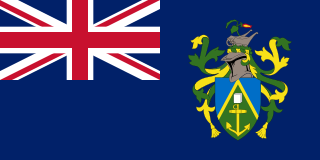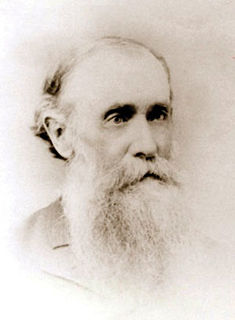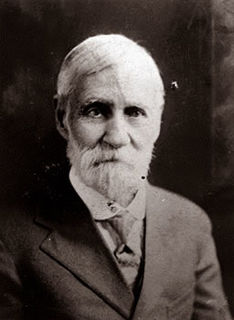
The Pitcairn Islands, officially the Pitcairn, Henderson, Ducie and Oeno Islands, are a group of four volcanic islands in the southern Pacific Ocean that form the sole British Overseas Territory in the Pacific Ocean. The four islands—Pitcairn, Henderson, Ducie, and Oeno—are scattered across several hundred miles of ocean and have a combined land area of about 18 square miles (47 km2). Henderson Island accounts for 86% of the land area, but only Pitcairn Island is inhabited. The islands nearest to the Pitcairn Islands are Mangareva to the west and Easter Island to the east.

The history of the Pitcairn Islands begins with the colonization of the islands by Polynesians in the 11th century. Polynesian people established a culture that flourished for four centuries and then vanished. They lived on Pitcairn and Henderson Islands, and on Mangareva Island 540 kilometres (340 mi) to the northwest, for about 400 years.

Avondale University is an Australian tertiary education provider affiliated with the Seventh-day Adventist Church. It is a part of the Seventh-day Adventist education system, the world’s second largest Christian school system.

Pacific Adventist University (PAU) is a tertiary institution located 21 kilometres outside Port Moresby, Papua New Guinea, and operated by the South Pacific Division of the Seventh-day Adventist Church. Both the faculty and the student body are international in composition. While most students come from Papua New Guinea and other Pacific island nations such as Tonga, Fiji, Samoa, Vanuatu and the Solomon Islands, others have come from Africa, Australia, Pakistan, China, the Philippines, and the United States.
The South Pacific Division (SPD) of Seventh-day Adventists is a sub-entity of the General Conference of Seventh-day Adventists, which oversees the Church's work in the South Pacific nations of Australia, New Zealand, Papua New Guinea and the islands of the South Pacific. Its headquarters is in Wahroonga, Sydney, Australia.

Seventh-day Adventist Church in popular culture refers to the coverage of Adventists and Adventism in film, television, literature, postage stamps and have been discussed in the media for their longevity. Adventists have impacted world eating habits in the breakfast and health food areas.
Pitcairn Islanders, also referred to as Pitkerners and Pitcairnese, are the inhabitants or citizens of the Pitcairn Islands. The Pitcairn Islands are a British Overseas Territory, mainly inhabited by Euronesians of British and Tahitian descent.

The Seventh-day Adventist Church in Tonga, is one of the smaller religious groups in the South Pacific island state of Tonga with a reported 3,853 members as of June 30, 2020, started by Seventh-day Adventist missionaries from the United States who visited in 1891 and settled in 1895. They set up schools but made very little progress in conversion, handicapped by dietary rules that prohibited popular local foods such as pork and shellfish, and that also banned tobacco, alcohol and kava.

The Seventh-day Adventist Church in the North Island of New Zealand is formally organised as the North New Zealand Conference (NNZ). It is one of 2 conferences of the New Zealand Pacific Union Conference, under the South Pacific Division.

The Seventh-day Adventist Church in New Zealand is formally organised as the New Zealand Pacific Union Conference of Seventh-day Adventists, a sub-entity of the South Pacific Division of Seventh-day Adventists. The membership of the Union is 20,943 as of 30 June 2020. The population to membership ratio is 1 Adventist to every 268 people. The headquarters for the Union is in Auckland, New Zealand.

Honiara is the capital and largest city of the Solomon Islands, situated on the northwestern coast of Guadalcanal. As of 2021, it had a population of 92,344 people. The city is served by Honiara International Airport and the seaport of Point Cruz, and lies along the Kukum Highway.
The Pitcairn Islands is a non-sovereign British overseas territory and the New Zealand dollar is used as exchange. The Pitcairn Islands began issuing its first commemorative coins in 1988. Though the Pitcairn Islands dollar is not a true currency in the strict sense of the word, and is not used as a circulation coinage, it can be lawfully exchanged as tender. The Pitcairn Islands dollar exists only because of the coin collecting market, which provides a major staple for the island nation. Having a population of only 50 according to the 2020 census, and with only one island in the group of four being populated, there is no need for local coinage. Coins consist of an important part of the Pitcairn Islands' tiny economy and help raise funds for the government's largely fixed and subsidised income.

The Bounty Bible is a Bible that is thought to have been used on HMS Bounty, the ship famed for the Mutiny on the Bounty.

John I. Tay was a Seventh-day Adventist missionary who was known for his pioneering work in the South Pacific. It was through his efforts that most of the inhabitants of Pitcairn Island were converted to Adventism, and that the General Conference of Seventh-day Adventists purchased the Pitcairn schooner for missionary work in the South Pacific.

Edwin Sebastian Butz was a Seventh-day Adventist (SDA) missionary who was active in Oceania and in Australia.
Edward Hilliard was a Seventh-day Adventist missionary from America who worked in Australia, India and Tonga. He was the first resident Seventh-day Adventist missionary on Tonga, and founded the Seventh-day Adventist Church in Tonga.

Pitcairn was a schooner built in 1890 for the Seventh-day Adventist Church for use in missionary work in the South Pacific. After six missionary voyages, the schooner was sold in 1900 for commercial use, and renamed Florence S. She was lost by stranding on the island of Mindoro, Philippine Islands, on 17 October 1912.

Merritt Gardner Kellogg was a Seventh-day Adventist (SDA) carpenter, missionary, pastor and doctor who worked in Northern California, the South Pacific, and Australia. He designed and built several medical facilities. Kellogg was involved in the controversy about which day should be observed as the Sabbath on Tonga, which lies east of the 180° meridian but west of the International Date Line.

In 1964 the South Sea Islands Museum was founded in Cooranbong, in New South Wales, Australia, to display artifacts collected by Seventh-day Adventist missionaries, who entered Australia in 1885 and expanded into New Zealand, Papua New Guinea, Solomon Islands, Gilbert and Ellice Islands, Fiji, Tonga, Kiribati, Samoa, Cook Islands, Tahiti and Pitcairn Islands.

The Pulau School is the only school on the Pitcairn Islands. It is located in the capital of Adamstown and follows a modified version of the New Zealand educational curriculum, but with some changes made to promote local culture and traditions. The school acts as a primary school and caters to children from 5–14 years of age. Higher education is usually completed at a boarding school in New Zealand. The students are taught by a visiting instructor who typically teaches on the island for a term of one year. The teacher is also considered the principal and is responsible not only for teaching, but developing the curriculum and promoting continuing education among the rest of the island's population.














